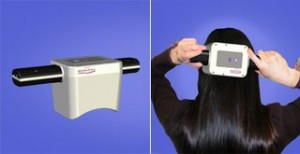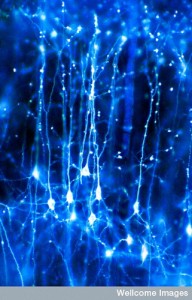 RSS FEED
RSS FEED
Posts Tagged ‘American Headache Society’
The MIDAS Touch
April 5th, 2009
![]() I recently took a MIDAS (Migraine Disability Assessment) test, and the results were enlightening. The MIDAS test was developed by Richard B. Lipton, MD, Professor of Neurology at the Albert Einstein College of Medicine, New York, NY, and Walter F. Stewart, MPH, PhD, Associate Professor of Epidemiology at Johns Hopkins University, Baltimore, MD. It provides an objective measure of how much your Migraines disable you, or impair you from work and acitivities of daily life. It is a useful test in several ways. Many Migraine and headache specialists make use of it to determine how you are affected by Migraine disease, and to measure your progress in treatment. The test is also useful if you need to build a body of evidence for a disability benefits application. You can find and take the MIDAS test on line at the American Headache Society web site, Achenet.org.
I recently took a MIDAS (Migraine Disability Assessment) test, and the results were enlightening. The MIDAS test was developed by Richard B. Lipton, MD, Professor of Neurology at the Albert Einstein College of Medicine, New York, NY, and Walter F. Stewart, MPH, PhD, Associate Professor of Epidemiology at Johns Hopkins University, Baltimore, MD. It provides an objective measure of how much your Migraines disable you, or impair you from work and acitivities of daily life. It is a useful test in several ways. Many Migraine and headache specialists make use of it to determine how you are affected by Migraine disease, and to measure your progress in treatment. The test is also useful if you need to build a body of evidence for a disability benefits application. You can find and take the MIDAS test on line at the American Headache Society web site, Achenet.org.
In addition to being helpful in your treatment, the test may be helpful to you personally, in better understanding the impact of your Migraines. The test has you look back over the past three months and count:
- the number of days you were unable to work,
- the number of days your work productivity was cut in half,
- the number of days you couldn’t do household activities,
- the number of days household activities were cut in half,
- and the number of days you couldn’t participate in family or social obligations,
due to Migraines. Then it asks you for the number of days you had head pain, and the average severity of your head pain. After you fill in all these numbers, the web site will calculate a score for you, which will indicate mild, moderate or severe disability due to Migraine disease. Taking the test again on later occasions will provide an objective measure of how your treatment is working.
MIDAS is not brand-new, but my headache specialist does not use it so I had not taken it before. I do, however, keep a very detailed diary, which is necessary to do this test. If you haven’t kept track of how many Migraines you had, when, how severe they were and how they affected you, you won’t be able to complete the test. Here at Free my Brain we will have a diary available for you soon.
What I learned for my self is that I am considered severely disabled by my Migraines. This might surprise many of the people who know me, as I am up and functioning most days. I have most of my Migraines in the evenings. This means, however, that I have virtually no life when it comes to socializing and leisure time, and it also means that I must constantly choose between work and family, work and household tasks. I have to earn a living, which is a struggle, so I don’t have as much time with family as I would like, very little time with friends, and as for household tasks, ha! Reading my MIDAS results, you could predict the layer of dust in my house!
I suppose the test confirmed things I already knew. It is a kind of validation, though, and it helps me focus on what I need to work on. I need to be vigilant about my lifestyle – getting enough rest, doing my relaxation practice every day, working with my doctor to find the right preventive regimen for me. I need to maximize my health so I can do my work, be with my family, and then if I have a little energy left worry about the house! The MIDAS touch? Keeping that focus is pure gold!
– Megan
Tags: American Headache Society, disability, MIDAS, migraine diary, Migraine disability
Posted in Managing, Medicine | Comments (0)
Highlights from the American Headache Society Annual Conference
July 1st, 2008
 Last week the American Headache Society held its 50th annual conference in Boston. You may have read other news of the proceedings and the many new discoveries, inventions, understandings, and treatment options that were presented at the conference. Lead expert Teri Robert of My Migraine Connection and Migraine blogger Eileen of My Life with Migraine attended the conference and will be posting a lot of information in the weeks to come. If I may relay some tidbits second-hand, I was inspired to hear of their experiences in a collegial atmosphere where a number of dedicated medical professionals and advocates are working and sharing ideas to help bring us relief from this life-stealing disease. I wish I could have gone along, but first things first. I need to get my own migraines under better control before attending conferences, which have always tended to trigger me. Though I suppose there might be no better place to be with a migraine!
Last week the American Headache Society held its 50th annual conference in Boston. You may have read other news of the proceedings and the many new discoveries, inventions, understandings, and treatment options that were presented at the conference. Lead expert Teri Robert of My Migraine Connection and Migraine blogger Eileen of My Life with Migraine attended the conference and will be posting a lot of information in the weeks to come. If I may relay some tidbits second-hand, I was inspired to hear of their experiences in a collegial atmosphere where a number of dedicated medical professionals and advocates are working and sharing ideas to help bring us relief from this life-stealing disease. I wish I could have gone along, but first things first. I need to get my own migraines under better control before attending conferences, which have always tended to trigger me. Though I suppose there might be no better place to be with a migraine!
The conference will provide material for many posts, both here and all around the Migraine blogosphere. I’m going to share a couple of highlights that I am particularly interested in, and we’ll touch on more of the new information as I have a chance to digest it.
One new device which looks promising is the transcranial magnetic stimulation, or TMS, device. Tested for use by those suffering from Migraine with Aura, the TMS device is held at the base of the skull at the first sign of aura (visual and sensory disturbances experienced by about 20% of migraineurs). You push a button to deliver two short magnetic field pulses to the brain. Apparently these pulses scramble and abort the abnormal electrical activity which takes place in the brain during a Migraine attack. The basic black and white model looks good for this raven-haired lady; maybe they’ll come out with some more colors soon! But seriously, this is a great alternative, since everyone can’t use triptans, and even if you can, triptans knock you out of action for a while.
 New research was presented about Why Pain Becomes Chronic. New understandings of how pain becomes chronic can help headache specialists develop new therapies which can help sufferers with Chronic Daily Headache. One of the new understandings involves the role of glial cells in the brain, which agitate neurons, increasing pain signals to the brain. Use of opiates appears to activate glial cells, so can contribute to the development of chronic pain. Research was also presented indicating that expectation of pain affects its severity, that in the case of chronic pain, the nervous system “over-reacts” but that this overreaction is physiological, not psychological. A very important distinction – biological changes have been observed in the nerves themselves. In other words, the pain is “all in our heads,” in physiologic structures in the brain, not “all in our heads” in any psychosomatic sense. I must say I feel vindicated – read my post It’s All in your Head on the difference between what’s in our heads physiologically and the old psychosomatic accusation we are so often subjected to.
New research was presented about Why Pain Becomes Chronic. New understandings of how pain becomes chronic can help headache specialists develop new therapies which can help sufferers with Chronic Daily Headache. One of the new understandings involves the role of glial cells in the brain, which agitate neurons, increasing pain signals to the brain. Use of opiates appears to activate glial cells, so can contribute to the development of chronic pain. Research was also presented indicating that expectation of pain affects its severity, that in the case of chronic pain, the nervous system “over-reacts” but that this overreaction is physiological, not psychological. A very important distinction – biological changes have been observed in the nerves themselves. In other words, the pain is “all in our heads,” in physiologic structures in the brain, not “all in our heads” in any psychosomatic sense. I must say I feel vindicated – read my post It’s All in your Head on the difference between what’s in our heads physiologically and the old psychosomatic accusation we are so often subjected to.
Yet another piece I am particularly interested in deals with Migraine in women and the role of hormones and the menstrual cycle. More on that when I know more!
Overall, the good news is, there are good people out there looking out for us, working hard to find ways to treat this disease.
– Megan Oltman
Neurons image courtesy of Rebecca Radcliff.
Tags: American Headache Society, Chronic Daily Headache, chronic pain, glial cells, Migraine treatment, Migraine wih Aura, transcranial magnetic stimulation
Posted in Advocacy, Medicine, Science | Comments (4)
The Weather Report inside my head (Sinus and Migraine locked in competition)
March 16th, 2008
Sniffly with a chance of coughing? Yesterday’s migraine has transitioned into today’s sinus infection. You don’t really want to hear about the nasty greenish glop going down the back of my throat! I seem to have  two major weather systems duking it out in here.
two major weather systems duking it out in here.
I’m going to try to make sense here, but the brain is not quite up to par today, so no promises. It’s hard to think with stuff pressing on the brain – whether that’s from the inflamed blood vessels of a migraine or from blocked up sinus cavities.
I’ve been wondering for some time about the sinus/migraine connection. In a thought-provoking article, Sinuses giving you a headache? It’s probably Migraine! Teri Robert tells us that ” nearly 9 in 10 people with sinus headache symptoms likely are suffering from Migraines,” and Migraine not only causes pain in the sinus area, but can lead to nasal congestion as well! According to a research study presented in 2004 at the 46th Annual Scientific Meeting of the American Headache Society (AHS), “real” sinus headache is only present when there is a sinus infection, which typically involves fever, lots of green or yellow mucus, and swollen lymph nodes.I have to say, as one who has clear and obvious Migraines, (pounding pain in one or both temples, with extreme light and sound sensitivity) and clear and obvious sinus infections (with the green glop of doom, swollen glands and fever), the study raises as many questions as it answers. To quote Teri Robert further:
Ironically, researchers believe a few of the people in the study may have acquired sinus infections as a result of having a Migraine. Lengthy Migraine attacks can lead to swollen nasal membranes and closed off sinus passages, creating the perfect environment for an infection, said Dr. Eross.
I had one neurologist (not a headache specialist) tell me my sinus problems are probably Migraine. Without asking any further questions about my history, it sounds like he read the research, but I don’t think he was giving me useful information. I don’t generally have those suspect sinus “headaches,” I have months of recurrent infection symptoms.
This is the essential chicken and egg dilemma. Do my Migraines lead to sinus infections? Does the pressure and swelling of infection trigger Migraines? Both look likely from my own history. My internist is intrigued by the question but has no answer for me. I’ve got my hopes pinned on the headache specialist appointment in June. What difference does it make? If I can work out a good preventive regimen for either ailment, I’d love to have it help both!
appointment in June. What difference does it make? If I can work out a good preventive regimen for either ailment, I’d love to have it help both!
In the meantime, I try to live in the way that will best take care of both the sinuses and the Migraine brain, which for me involves avoiding dairy, keeping my supplements up (including magnesium and B for the head and C and zinc for the immune system), eating in a way that takes care of my gut (high fiber, not a lot of processed foods, using a pro-biotic supplement), keeping my nasal passages moist with a neti pot and saline spray, and using relaxation to keep the ole brain calm cool and collected (more or less).
Megan Oltman
Free my Brain from Migraine Pain, Free my Head from Sinus Dread?
Vitamin photo courtesy of DRB62/Daniel R. Blume
Gargoyle photo courtesy of ClatieK/Katie Claypoole
Tags: American Headache Society, migraine, sinus infection, Teri Robert
Posted in Communicating, Managing, Medicine | Comments (1)
That disclaimer thing...
Remember: nothing we do here is medical advice or treatment or is a substitute for medical advice or treatment. Get competent medical advice to learn more about your migraines, possible treatments and risks.
What's New on Migraine Support Group Coaching |
Recent Comments
- on Calling all Redheaded Migraineurs
- on No, You’re not Crazy, You just Have Migraines
- on No, You’re not Crazy, You just Have Migraines